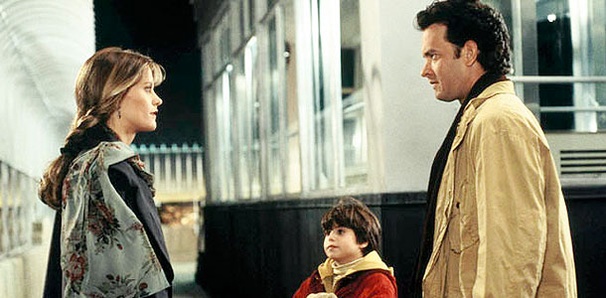Coming of Age in ‘Morris from America’ and ‘Little Men’:
Creating Empathetic Protagonists
by Susan Kouguell
Click to tweet this article to your friends and followers!
It was serendipitous timing. At a recent press screening I attended, two independent films, Morris from America followed by Little Men, played back-to-back. Why was it serendipitous timing? While these two poignant films are significantly different, they are both coming-of-age stories, centering on 13-year-old male teens thrown into a fish-out-of-water situation by their fathers.
The definition of the term fish-out-of-water is when a character must navigate and cope in a foreign setting, culture, situation, or occupation. Here are some examples: A naïve protagonist must survive living in a new environment (Splash); a man disguises himself like a woman (Tootsie, Some Like it Hot); a child lives as an adult or vice versa (Big, Freaky Friday); a spoiled protagonist must survive in a disadvantaged setting or vice versa (Private Benjamin, Trading Places).
About Morris from America
Morris Gentry, a 13-year-old who has just relocated from the Bronx with his single father, Curtis to Heidelberg, Germany, fancies himself the next Notorious B.I.G.,—a budding hip-hop star in an EDM world. To complicate matters further, Morris quickly falls hard for his cool, rebellious, 15-year-old classmate Katrin. Morris sets out against all odds to take the hip-hop world by storm and win the girl of his dreams.
Written and directed by Chad Hartigan (This is Martin Bonner), Morris from America won two prizes at this year’s Sundance Film Festival, the Waldo Salt Screenwriting Award and a Special Jury Award.
About Little Men
When 13-year-old Jake’s grandfather dies, his family moves from Manhattan back into his father’s old Brooklyn home. There, Jake befriends the charismatic Tony, whose single mother Leonor, a dressmaker from Chile, runs the shop downstairs. Soon, Jake’s parents Brian (a struggling actor) and Kathy (a psychotherapist) — ask Leonor to sign a new, steeper lease on her store. For Leonor, the proposed new rent is untenable, and a feud ignites between the adults. Meanwhile, the boys develop a kinship; Jake aspires to be an artist, while Tony wants to be an actor, and they have dreams of going to the same prestigious arts high school together. But they can’t avoid the problems of their parents and the adult conflict intrudes upon their friendship.
Directed by Ira Sachs (Love is Strange, Keep the Lights On, Forty Shades of Blue), screenplay by Sachs and Mauricio Zacharia.
Creating Empathy
Readers need to feel something for your characters. Whether it’s love, hate, disdain or pure delight, film industry folks expect to understand why your characters get along or don’t get along with their friends, family members, and others.
African American Morris Gentry (in Morris from America ) stands out in the German Caucasian youth center due to his skin color, and endures racial epitaphs, as teens sling stereotypical provocative words at him. Though Morris is not yet fluent in the German language, the words are not lost on him. For Little Men’s Jake, an aspiring artist, his move to Brooklyn and a new set of classmates who taunt him for not participating in their sports games (similar to Morris) makes the world of the new borough further isolating.
The two distinct settings of Brooklyn (Little Men) and Heidelberg, Germany (Morris from America) illustrate foreign and alienating worlds for protagonists Jake and Morris. These two young teens must learn to navigate their respective new environments while overcoming personal familial obstacles. Their respective journeys are successful because theirsituations are relatable; Jake and Morris are vulnerable, flawed, and believable. They are empathetic.
Four Tips to Create Empathetic Characters
- CONFLICT: Agreements and disagreements, discords and disharmony, must be conveyed in a way that readers gain an understanding of what’s causing the root of their issues.
- HUMANIZE YOUR CHARACTERS: Give them identifiable histories, vulnerabilities, and behaviors. Whether your characters misbehave or are always on good behavior, demonstrate their specific emotional, mental, physical, and/or social behaviors.
- MOTIVATIONS: The reasons your characters take the actions they do to help or hinder each other, stem from inward and outward motivations. Characters must have clear and plausible motivations that give insight into who they are and the actions they take.
- ATTITUDE: Characters must have specific attitudes towards each other. Show how your characters view themselves, relate to others.
Regardless of your script’s genre, empathetic protagonists attempting to overcome obstacles is compelling; it raises the stakes in your characters’ journeys, and adds more layers of conflict to the plot.
Morris and Jake are empathetic protagonists with distinct attitudes, motivations, and behaviors. Their respective family losses prompt their fathers to make decisions that affect the young teens’ lives, prompting the major conflict in the films. The ways in which the boys handle and mishandle the consequences of their fathers’ choices, create characters the audience is rooting for to succeed.
Morris from America premieres exclusively on DirecTV Cinema.
















